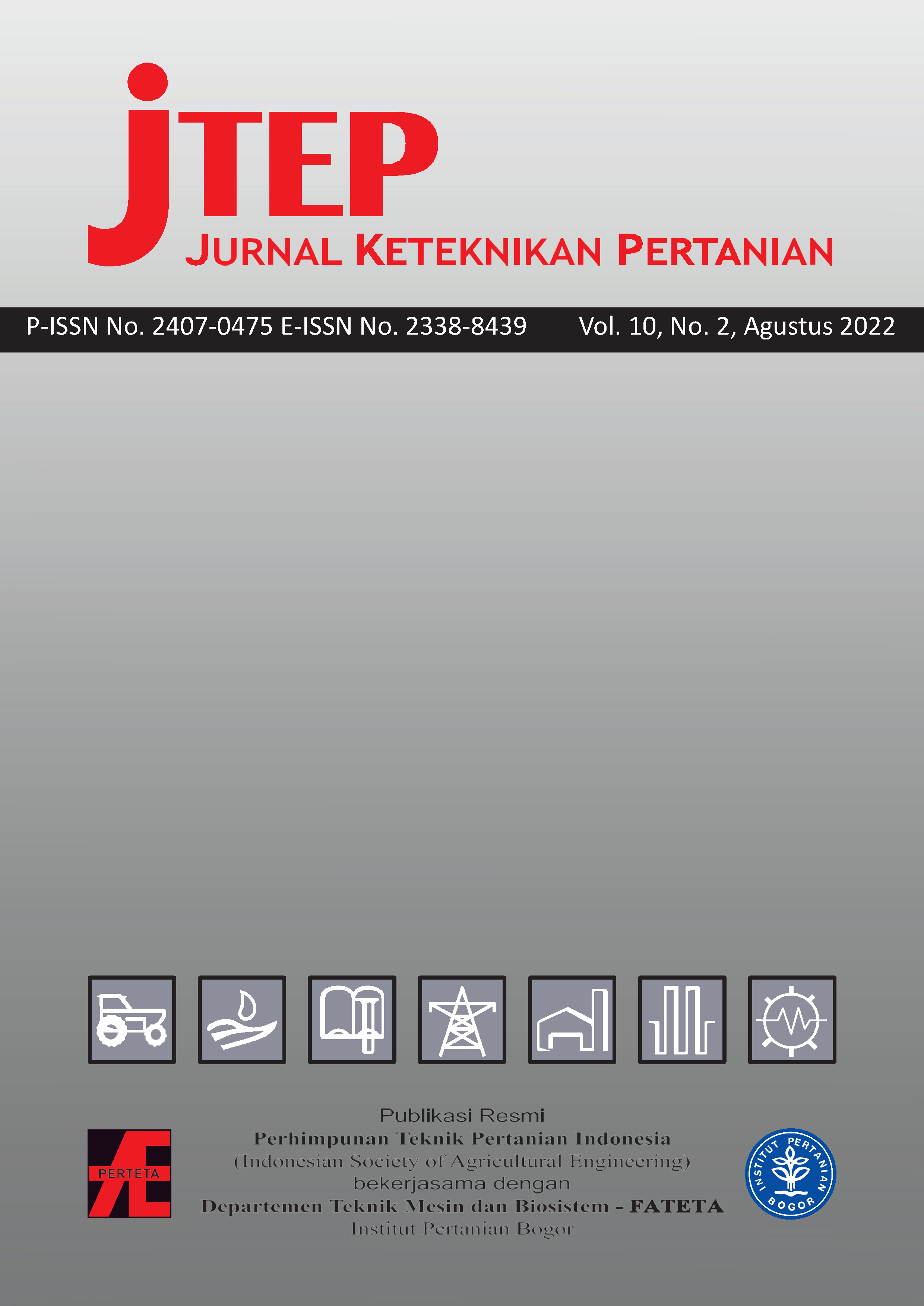Prediksi Kandungan Kimia Kopra Dengan FT-Nir Spectroscopy Menggunakan PLS
Abstract
Copra is a coconut derivative product used as a raw material for making coconut oil and its derivatives. The chemical content of copra is determined using chemical method that damage the material, take a long time, and use chemicals. Therefore, it is necessary to have another alternative in determining the chemical content of copra, which is non-destructive, fast and does not contain chemicals. The purpose of this study was to examine the FT-NIRS method as a rapid method for predicting the water and free fatty acids (FFA) content of copra. The reflectance of 45 whole copra samples was measured using the NIRFlex N-500 spectrometer at the wavelength of 1000-2500 nm. After that, the water and free fatty acid content of copra were determined using chemical method. Several spectral data processing (SNV, MSC, Normalization, and OSC) were carried out then the processed spectra were calibrated with chemical data using PLS. The best prediction for copra water content is using SNV pretreatment with 12 PLS factors (r = 0.97, SEC = 0.70%, SEP = 0.73, CV = 9.08%, RPD = 3.41 and consistency 95.75%). Meanwhile, the prediction of free fatty acids (FFA) content is using OSC pretreatment with 13 PLS factors ( r = 0.90, SEC = 0.04%, SEP = 0.05%, CV = 24.45%, RPD = 2.05 and 71.78% consistency). These results indicate that the water and FFA content of copra can be predicted by FT-NIR spectroscopy.
Authors

This work is licensed under a Creative Commons Attribution 4.0 International License.
Authors submitting manuscripts should understand and agree that copyright of manuscripts of the article shall be assigned/transferred to Jurnal Keteknikan Pertanian. This work is licensed under a Creative Commons Attribution-ShareAlike 4.0 International License (CC BY-SA) where Authors and Readers can copy and redistribute the material in any medium or format, as well as remix, transform, and build upon the material for any purpose, but they must give appropriate credit (cite to the article or content), provide a link to the license, and indicate if changes were made. If you remix, transform, or build upon the material, you must distribute your contributions under the same license as the original.

